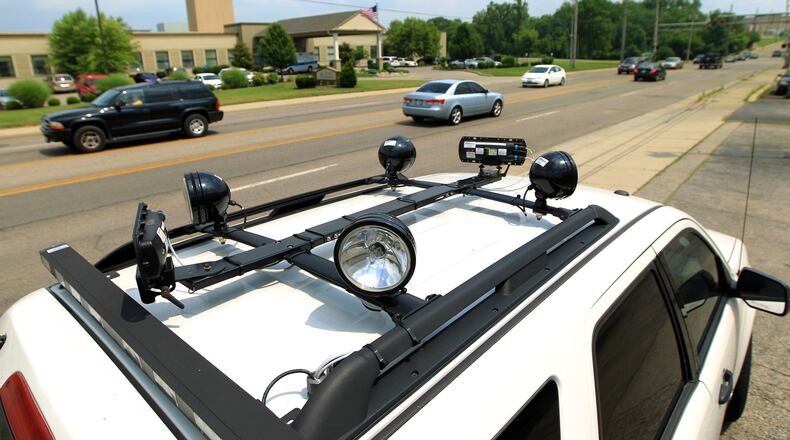The tiny, cash strapped village is still clenched in litigation with about 3,300 speeders over the original pole-mounted speed cameras that were deemed unconstitutional in 2014. A judge has ruled the village must repay the speeders an estimated $3.2 million.
RELATED: New Miami has 10 years to repay speeders $3.2 million, judge rules
“We had problems with some of the picture quality,” Adams said about the hand-held cameras police have been using to catch speeders where the speed limit drops coming out of Hamilton to 35 mph, just past the bridge on U.S. 127. “If we would detect 100 violations, when we went back to go through those the reviewing officer wouldn’t be able to read the plate. There were months that we would maybe have to dump 50 percent of the violations because the plates weren’t visible.”
The new speed-enforcement vehicle now being tested also has its flaws, Adams said, so the village is still debating whether to use it. He said no tickets have been issued from the speed-enforcement vehicle because officials are still working to get it in the best position to do its job. He said they are still using the hand-held speed detectors while they test the vehicle.
FROM 2013: Hamilton’s speed-enforcement van reduces amount of citations issued
“The equipment the new vendor has provided us is more advanced than the equipment we had,” Adams said. “The equipment on the white vehicle is something we are testing to make sure it’s reliable, it’s accurate, before we decide whether it’s going to be used.”
Adams said the village isn’t buying the vehicle; instead, it would be part of the vendor package just like the hand-held units are with Blue Line Solutions. Since the village re-booted its speed camera program in 2016 — retired Judge Michael Sage ordered the end of the speed program in 2014 — 19,787 citations were issued through May.
The village’s share of the virtually automatic $95 ticket under the program is 65 percent, or $61.75. As of June, the village had collected $783,969 from the speed cameras. The village has racked up $309,592 in legal fees defending this case, a bill taxpayers are footing because insurance doesn’t cover this type of litigation.
Josh Engel, one of the speeders’ attorneys said this entire lawsuit is about the integrity of the speed camera programs.
“The problems with the new system just underscore the need for due process both in the new system and under the old system that Judge Sage found was unconstitutional,” Engel said. “The purpose of due process is to assure the accuracy and reliability of results.”
Last month Judge Michael Oster ruled the village can pay out the estimated $3.2 million judgment, plus interest, over 10 years. He also ruled a statutory three percent interest charge is appropriate. He still must render a final judgment in the case and then it will return to appeals court level, according to the attorneys involved.
About the Author
